The site, perched on Cu Lao hill along the Cai River in Nha Trang, Khanh Hoa province, has now been officially recognized as a special national relic.
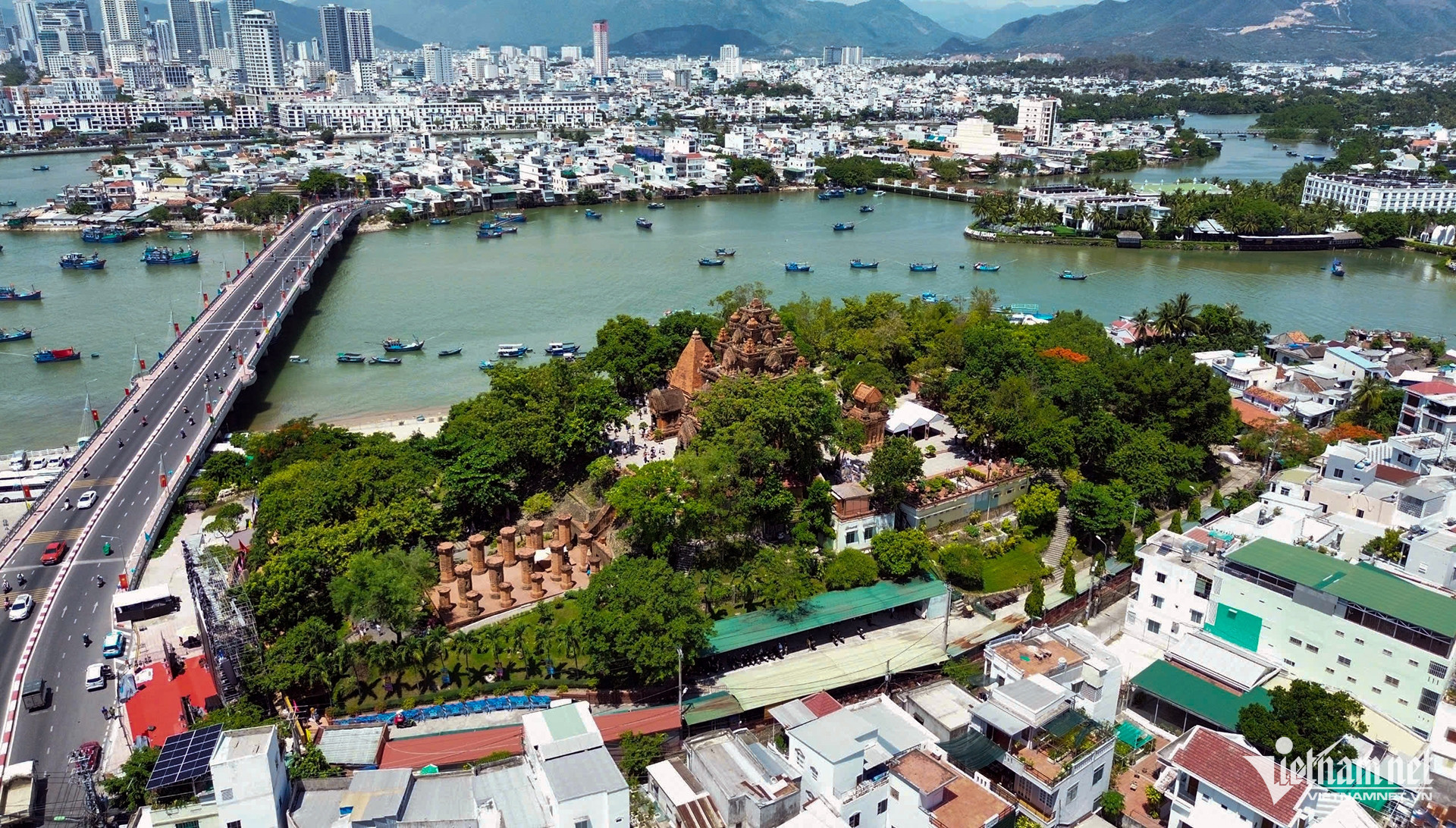
On the evening of July 10, the Khanh Hoa People's Committee hosted a ceremony to announce the designation. Built between the 8th and 13th centuries, Ponagar Tower is one of the largest remaining Cham complexes.
According to legend, it was constructed during the Panduranga dynasty to worship the goddess Ponagar, considered the Mother of the Land by the Cham people. For centuries, the site has played a central role in both the material and spiritual life of local communities.
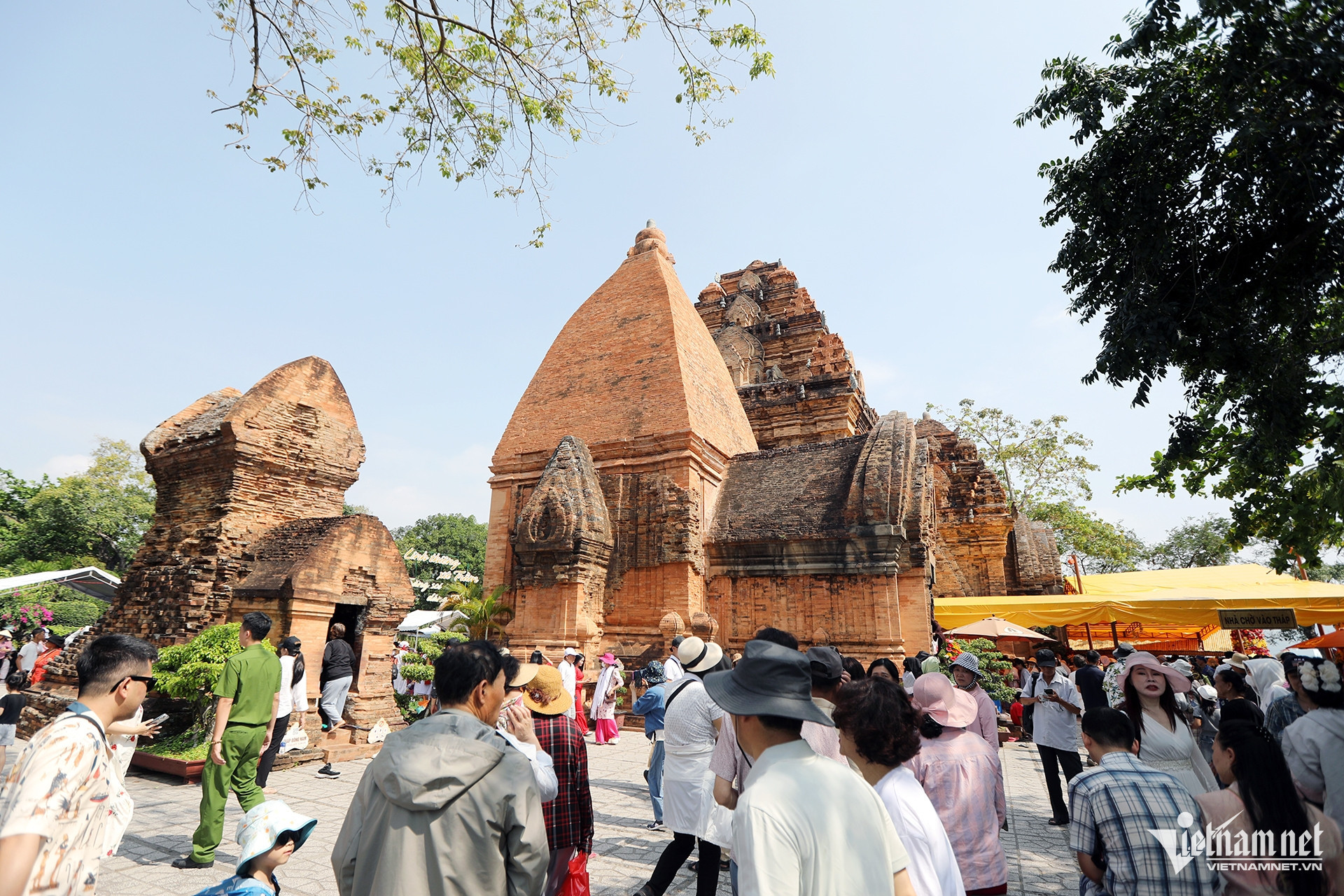
In 1653, as Vietnamese communities settled in the Thái Khang region (modern-day Khanh Hoa), they absorbed Cham cultural elements, embracing goddess Ponagar as the Vietnamese Holy Mother Thien Y A Na. Legend holds that she descended from heaven to teach people farming, weaving, and sericulture.
The site features the Mandapa (vestibule), a waiting area for ceremonial events, supported by four rows of terracotta columns - ten large inner columns and twelve smaller octagonal outer ones.
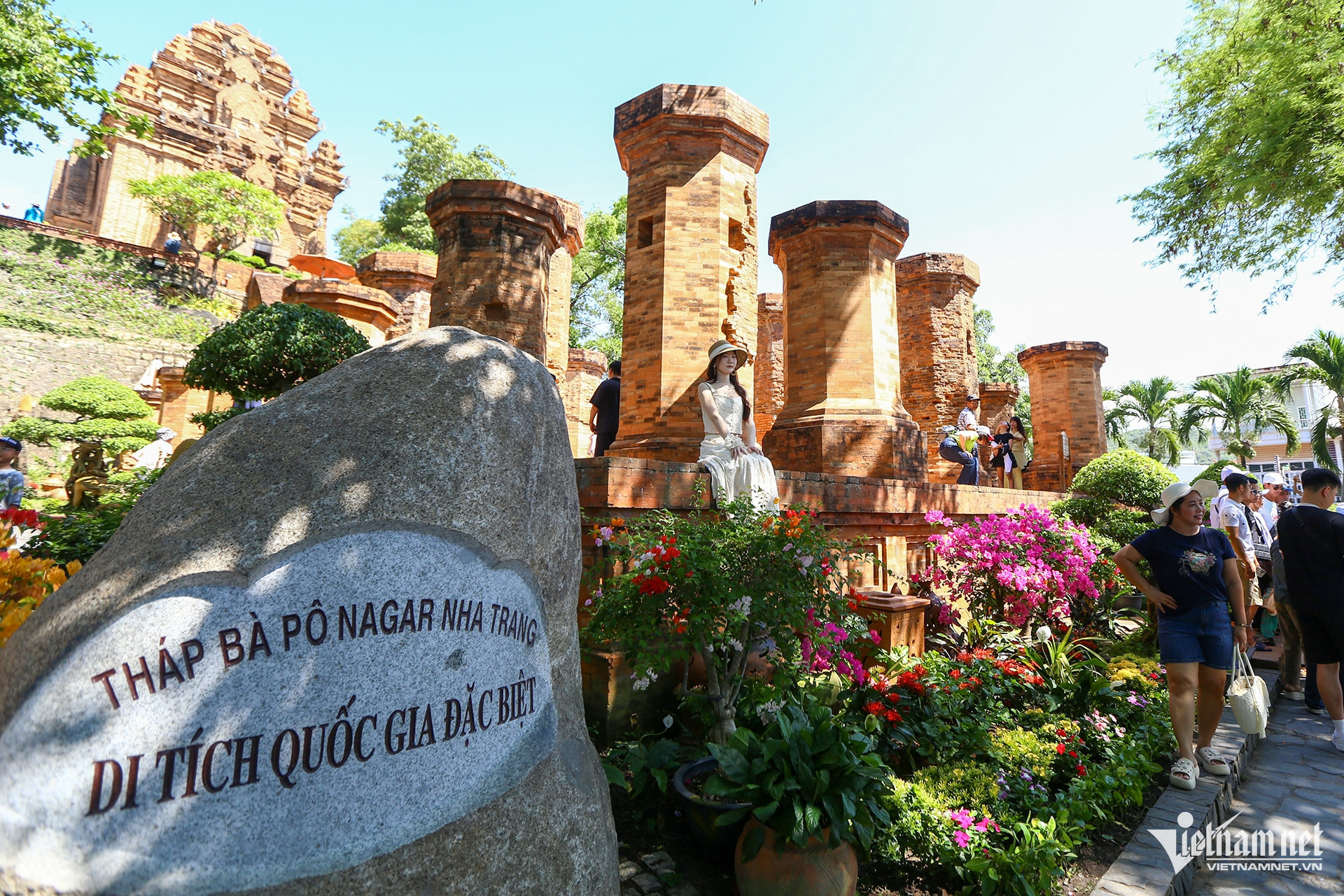
The temple complex occupies the highest point of Cu Lao hill and includes four brick structures built in classic Cham style.
Each tower is hollow to the top, with entrances facing east. The exteriors are decorated with grooves and pillars, and several towers have sculptures of deities and sacred animals.
The Main Tower, which is about 23 meters tall, is dedicated to the goddess Ponagar and is considered the soul of the complex. It has four tiers, corner shrines, and stone statues of mythical animals.
Inside are terracotta reliefs of celestial dancers, sacred creatures, geese, goats, and elephants. Above the entrance is a relief of the god Shiva.
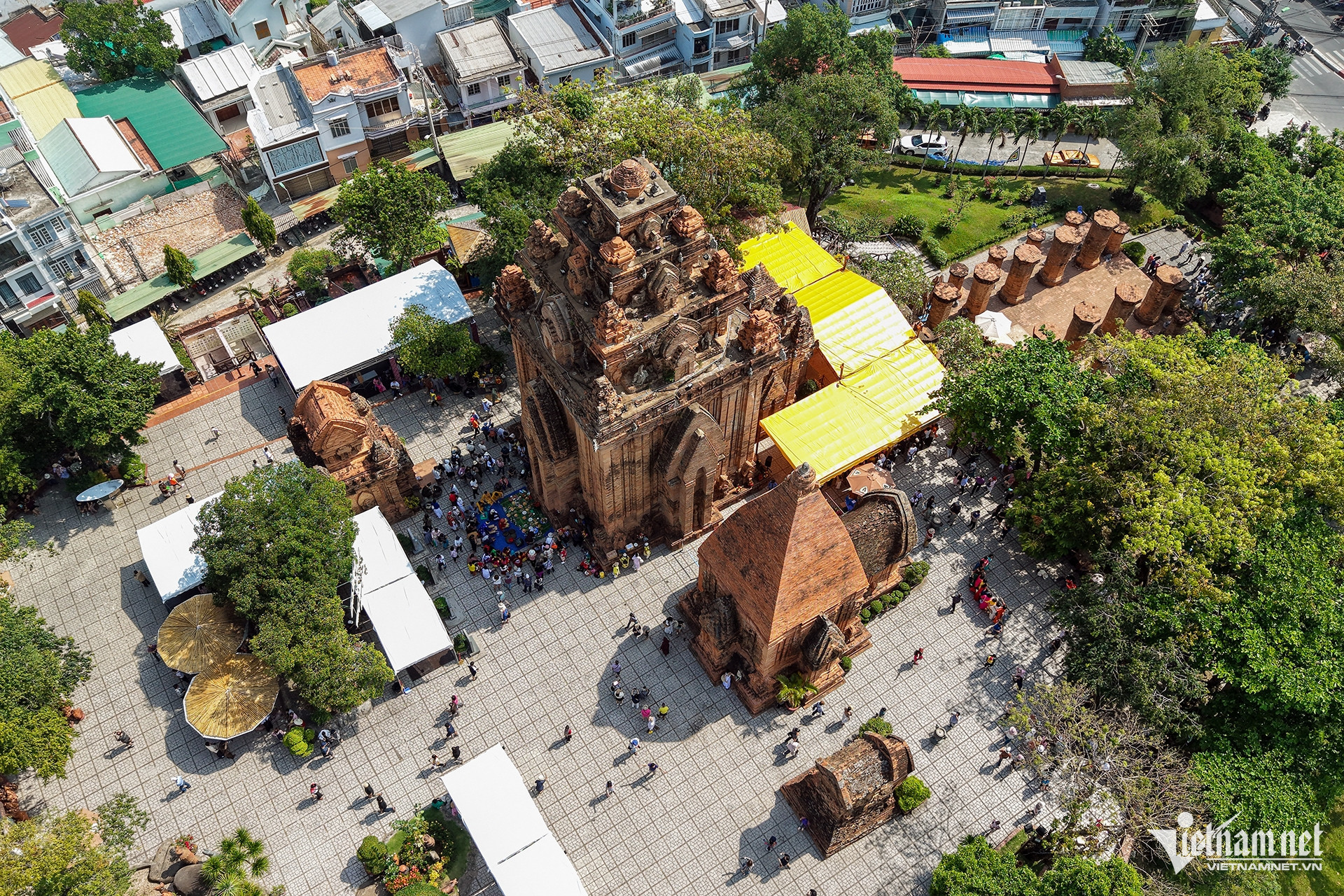
The three remaining towers are devoted to Hindu deities: the southern tower honors Shiva, one of Hinduism’s supreme gods; the southeastern tower is dedicated to Skandha; and the northwestern tower venerates Ganesha, both sons of Shiva.
The site also preserves some of the oldest Cham inscriptions, which praise the goddess Ponagar and document offerings of land and resources for the temple’s upkeep.
“I had read about Cham culture, but it wasn’t until I visited Ponagar Tower that I truly grasped its beauty. Every brick and column seems to narrate a forgotten piece of history,” said Dinh Hong Quan, a tourist from Hanoi.
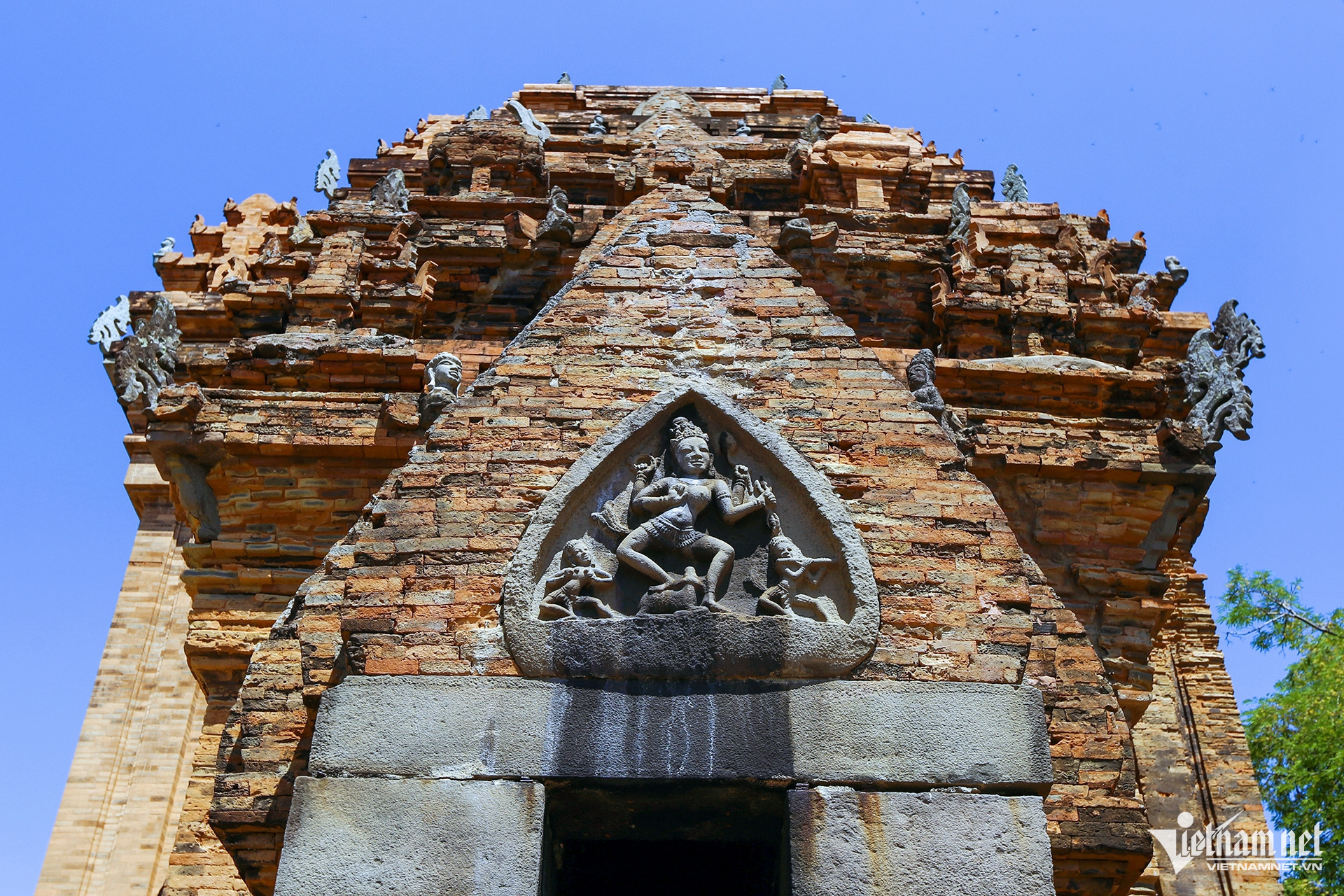
The Preservation Center for Monuments of Khanh Hoa reports that Ponagar Tower welcomes 4,000–5,000 visitors daily, both Vietnamese and international.
Beyond its architecture, Ponagar Tower also serves as a central hub for spiritual practices in the South Central and Central Highlands regions. Each year, from the 20th to the 23rd of the third lunar month, the site hosts the Ponagar Tower Festival to honor the Holy Mother Thien Y A Na. Thousands, including many Cham people, come bearing offerings for the celebration.
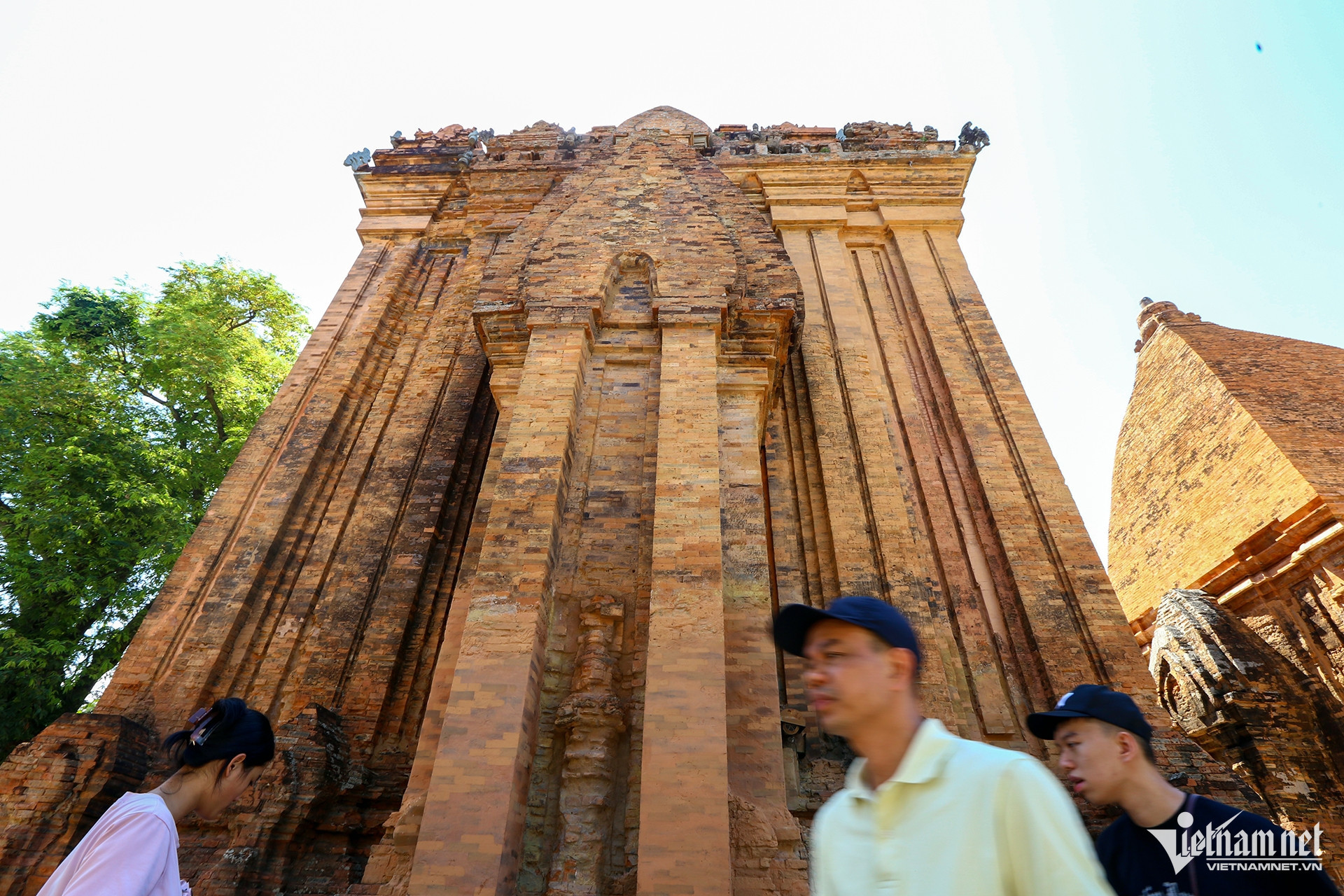
Next to the main tower, a cabinet displays traditional indigo ao dai (long gowns) for visitors to borrow before entering the sanctuary, ensuring respectful attire.
“Even as a foreigner, I could feel something uniquely powerful here. The atmosphere and architecture are unlike any Indian temples I’ve seen, but they still feel surprisingly familiar,” shared a South Korean tourist after donning an ao dai to enter the main sanctuary.
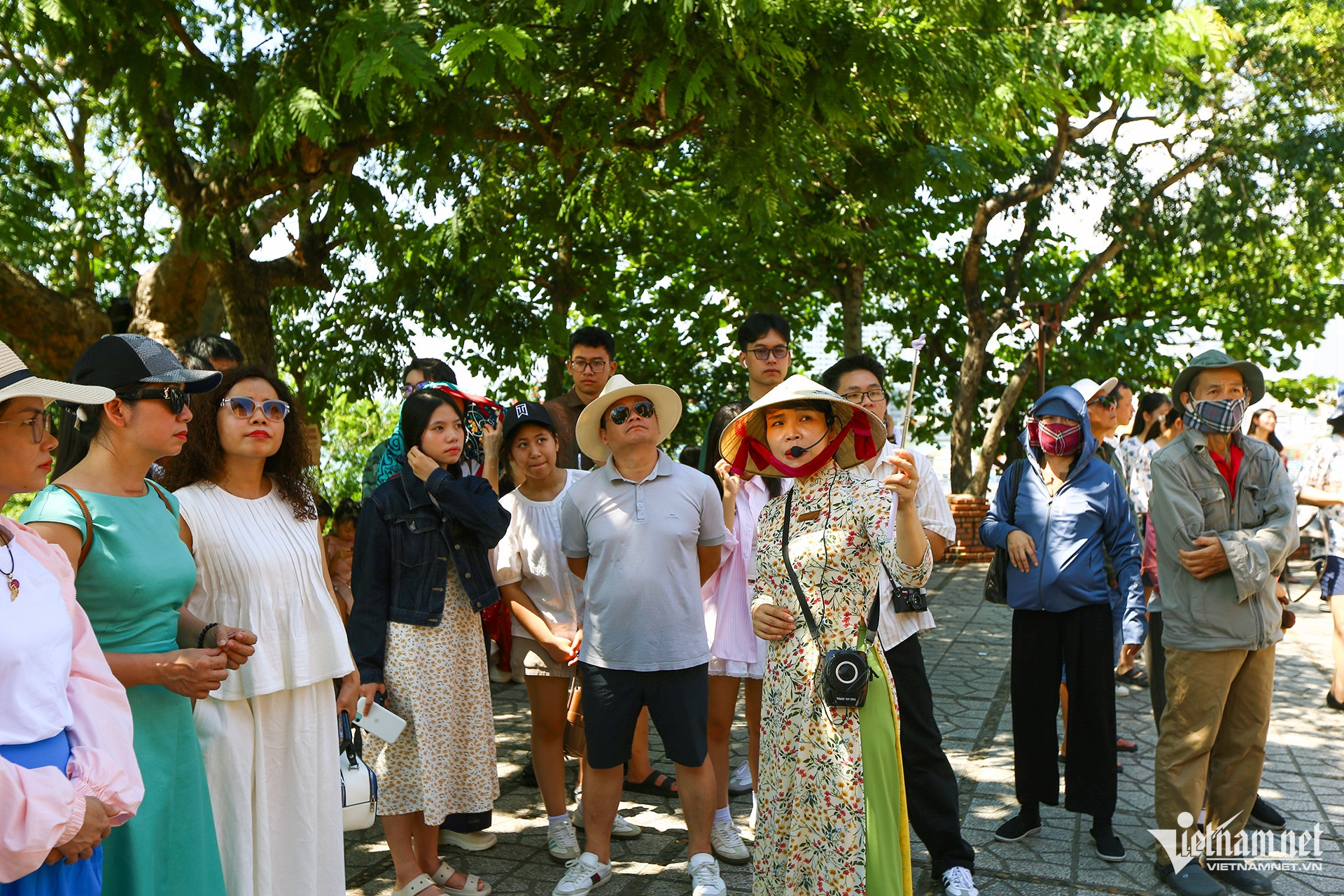
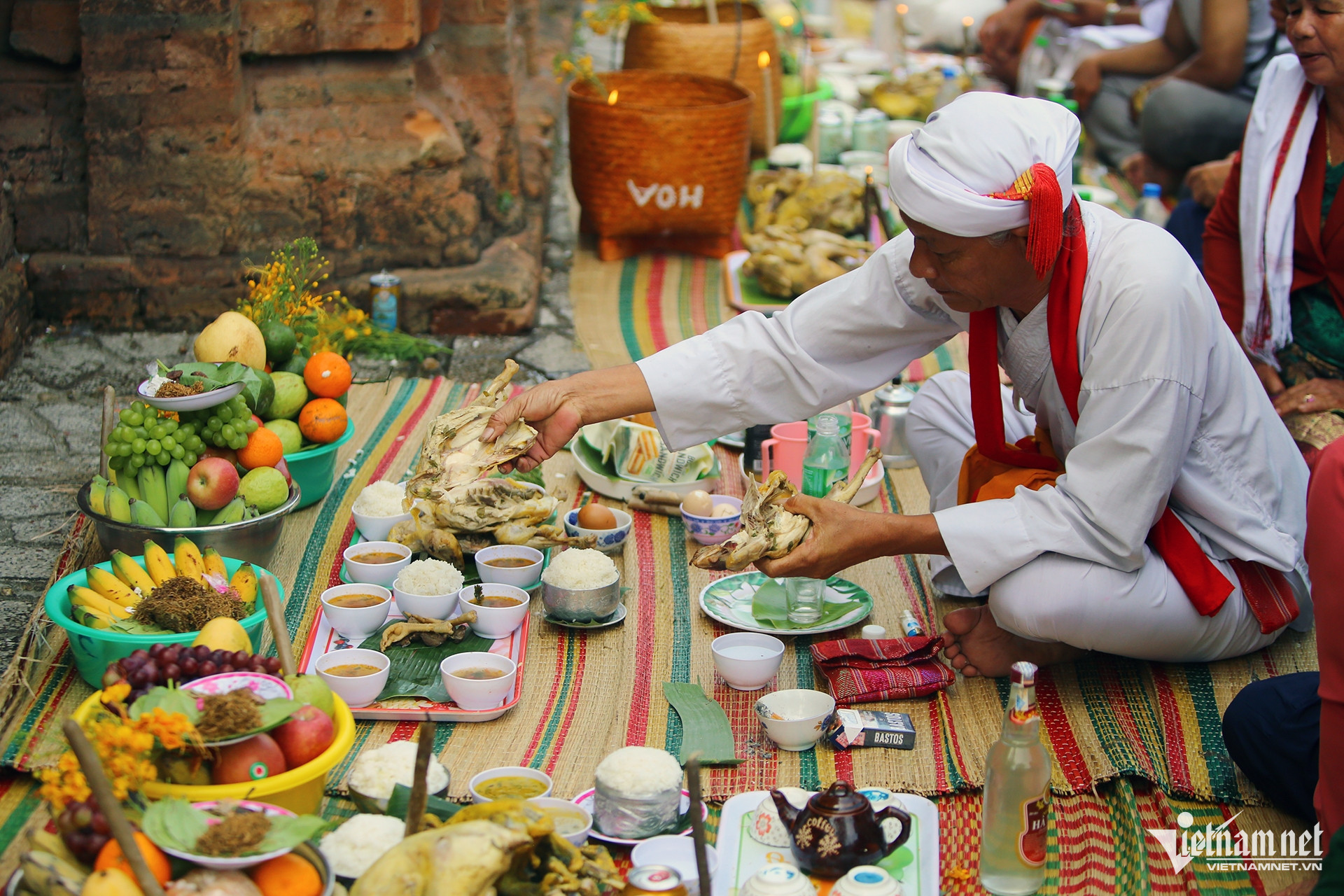
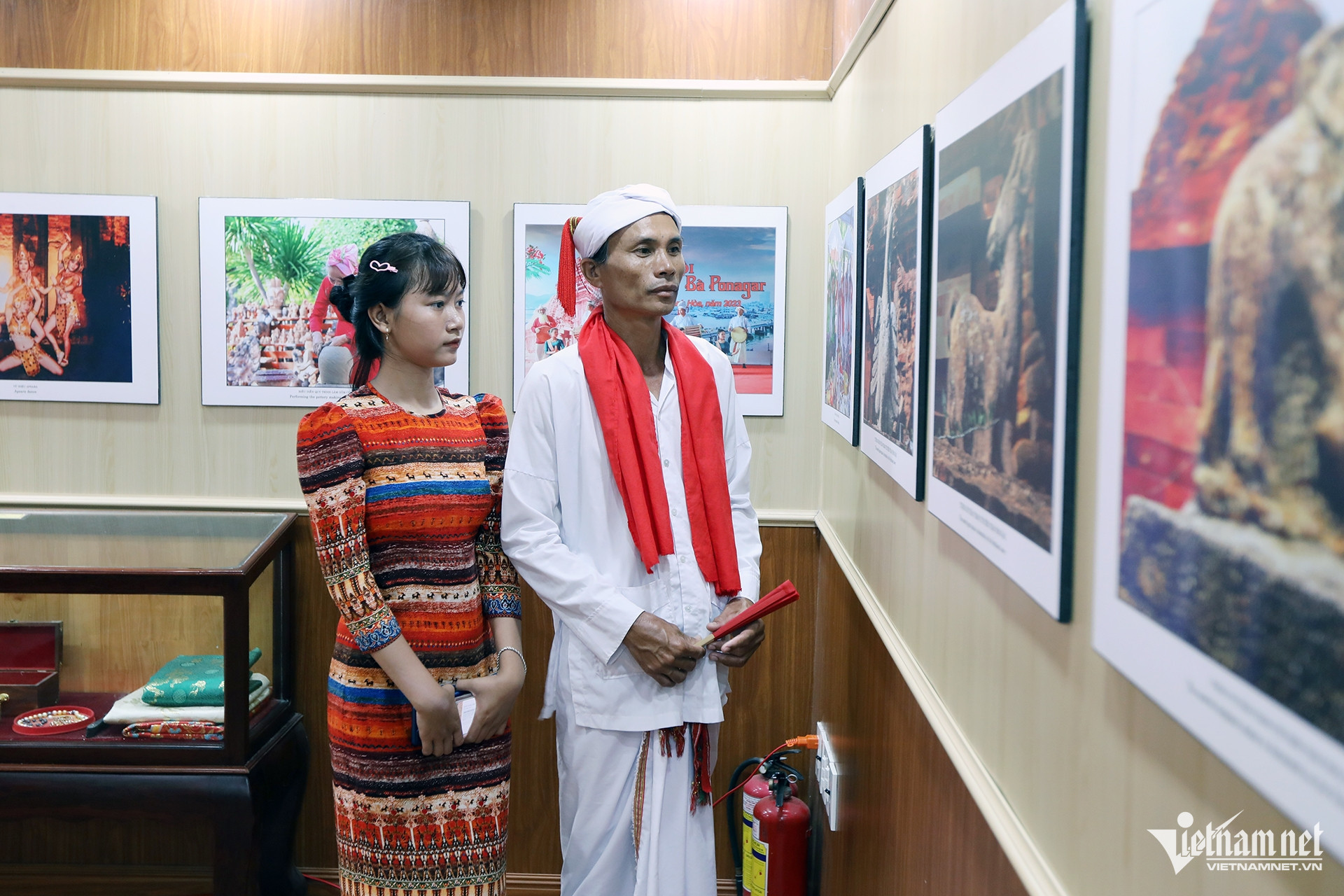
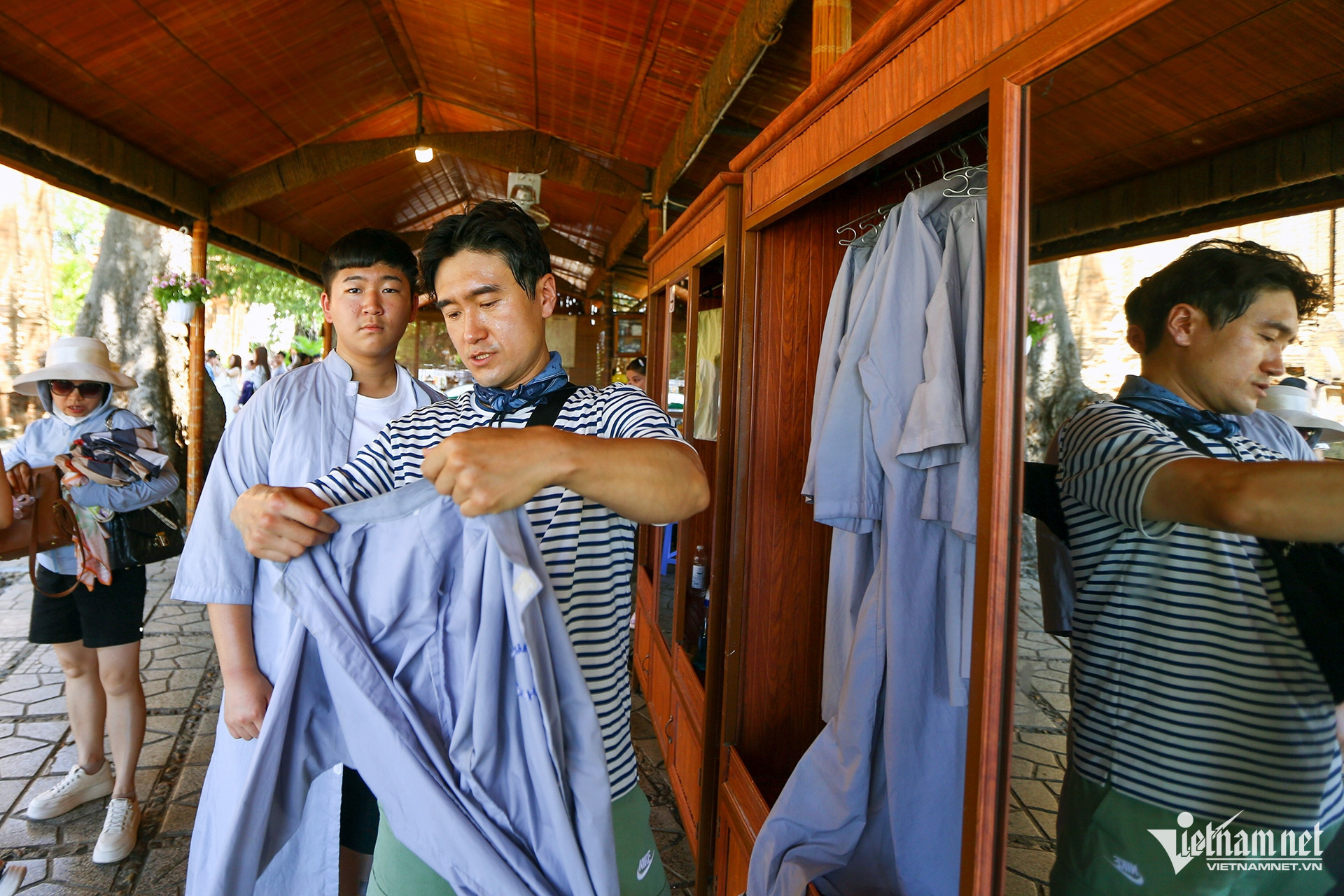
Xuan Ngoc